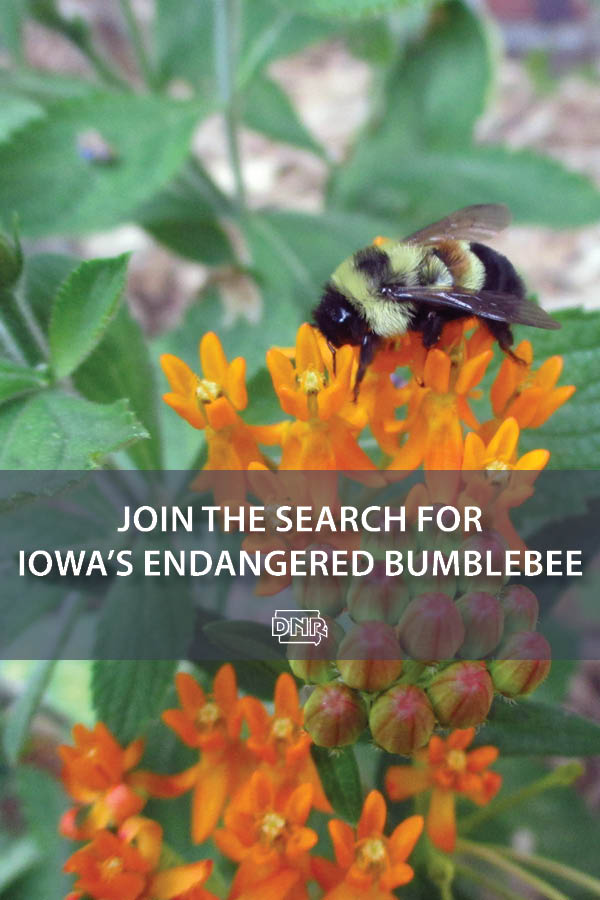The rusty patched bumble bee was designated as endangered by the federal government in 2017, after determining that the population had declined 87 percent in the last 20 years and is only present on 0.1 percent of its historic range.
 Named after the rusty patch centrally located on the backs of workers and males, but not queens, it once occupied grasslands and tallgrass prairies in the Upper Midwest and Northeast.
Named after the rusty patch centrally located on the backs of workers and males, but not queens, it once occupied grasslands and tallgrass prairies in the Upper Midwest and Northeast.
In Iowa they can be found mainly in the northeast corner, concentrated in Black Hawk, Clayton, Johnson, Allamakee, Jackson and Winneshiek counties. However, rusty patched bumble bees have recently been confirmed six new locations in Iowa in the last two weeks, including in Boone County in an urban prairie garden, prompting wildlife experts to ask gardeners in central Iowa to look for this unique species.
The Iowa Department of Natural Resources is in the process of conducting a survey to identify locations where rusty patched bumble bees are found that will be included as part of a larger national population survey.
Rusty patched and other bumble bee species provide essential ecological services for their respective ecosystems, especially for native flora, including wildflowers and plants that produce fruits and seeds that other wildlife depend on. They are also critical for the pollination of some of our favorite crops including blueberries, cranberries, and tomatoes. In fact, bumble bees are more effective pollinators than honey bees because of their ability to “buzz pollinate,” where the bees contract their indirect flight muscles to produce strong vibrations that forcibly expel the pollen from inside the flower.
What you can do to help
Plant a pollinator garden.
Use native bee-friendly plants that flower in various times of the year so the bees always have a food source. Wildflowers that are particularly good for rusty patched bumble bees include purple prairie clover, wild bergamot or bee balm, wild indigo, joe-pye-weed and goldenrod. For a more complete list read the Rusty Patched Bumble Bee Midwest Plant Guide. Avoid invasive and non-native plants and remove any invasive plants you find in your yard.
Offer a nesting location option.
Rusty patched bumble bees in particular like to nest in the ground so providing nesting habitat is also important. Examples of nesting habitat would be unmowed or brushy areas and natural areas where there is undisturbed soil.
Minimize use of pesticides.
Remember, pesticides can be lethal to bees, so limit their use and avoid them entirely when you can.
Have you seen a bee? Do you want to know its species? Take a picture and visit bumblebeewatch.org.
If you've found a Rusty Patched Bumble Bee, please contact the Iowa DNR at 515-725-8464 or seth.moore@dnr.iowa.gov.